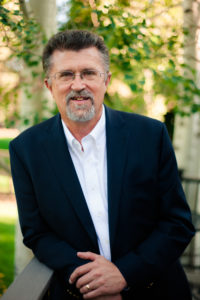
Have you noticed the uptick (or at least increase visibility) of governance failures in churches and other Christian organizations?
When the failure came to light at the Willow Creek Church in 2018, a letter from the Elders to the congregation stated that this was a clear failure of their governance practices and they were actively seeking new governance models. Where would they look? Where would you look?
To date, most insight given to church leadership has been based on word studies in the original languages of scripture. Using this approach, we keep coming back to the same confusion, lack of clarity and poor governance outcomes.
Soon to be released, a new book, Aligned Influence: Beyond Governance by Ken Schuetz, offers a new approach that has proven successful. Here is an excerpt from the book related to churches.

At their core, churches are faith-based membership organizations that are both places of worship and registered nonprofit corporations. Consequently, they have at least two sources of input about the role and structure of their board of directors: their theological text (the Bible) and corporate best practices. Seminaries typically provide very little guidance to students and church leaders about church governance. So leaders tend to try to gather all of their guidance from the Bible or adopt governance strategies that they see in their community. Some churches that have strong denominational ties get a governance structure dictated to them from their denomination’s headquarters.
Regardless of where churches get their guidance, they have seen the same kinds of governance failures that the secular world has experienced. The leaders of very large churches are often charismatic leaders* who sometimes unintentionally restrict the kind of balanced influence that both their theological texts and corporate best practices advocate. Instead, what they say goes, and what they receive from fellow church leaders and their congregations tends to provide little oversight.
Aligned Influence®, on the other hand, provides corporate best practices that align well with the key leadership/influencer roles identified in the biblical books of 1 Timothy and Titus. Overseer (elder) and servant leader (deacon) roles clearly align with the board and executive roles as outlined in the Christian Scriptures. In fact, churches that have implemented Aligned Influence® have discovered additional organizational benefits from more clearly defining and aligning these biblical roles.
Aligned Influence®: Beyond Governance: A Better Way Forward for Boards, Executives, and Their Organizations by Ken Schuetz, will be released by Morgan James Publishing on March 30, 2021. It is available on Amazon and at Barnes & Noble.
* Here “charismatic leaders” does not necessarily designate leaders of a Pentecostal persuasion. Rather, I use this phrase to refer to church leaders who inspire in others the desire to follow them and their teaching sometimes even irrespective of the leaders’ theological commitments or denominational ties. These are leaders who others find personally appealing, alluring, fascinating, welcoming, and even captivating.
Ken Schuetz is the CEO and founder of Aligned Influence Consulting, the creator of the Aligned Influence model, and the author of the about-to-be-published book, Aligned Influence: Beyond Governance. Ken invested the first 25 years of his career as an executive at the University of Colorado, Boulder, where he currently is a member of the teaching faculty of the Leeds School of Business. He has served on the boards of schools, churches and nonprofits, and served as the chairman of the Substantial Services Taskforce for the National Education Broadband Service Association. Ken’s new book, which is available on his website and on Amazon, addresses the complex “ecosystems” within organizations, especially between board members and executive leadership. This ecosystem of influence is not well understood, until now. Ken and the Aligned Influence model offer a unique perspective to this central problem and a solution that addresses organizational alignment as a necessary prerequisite to effectiveness.


